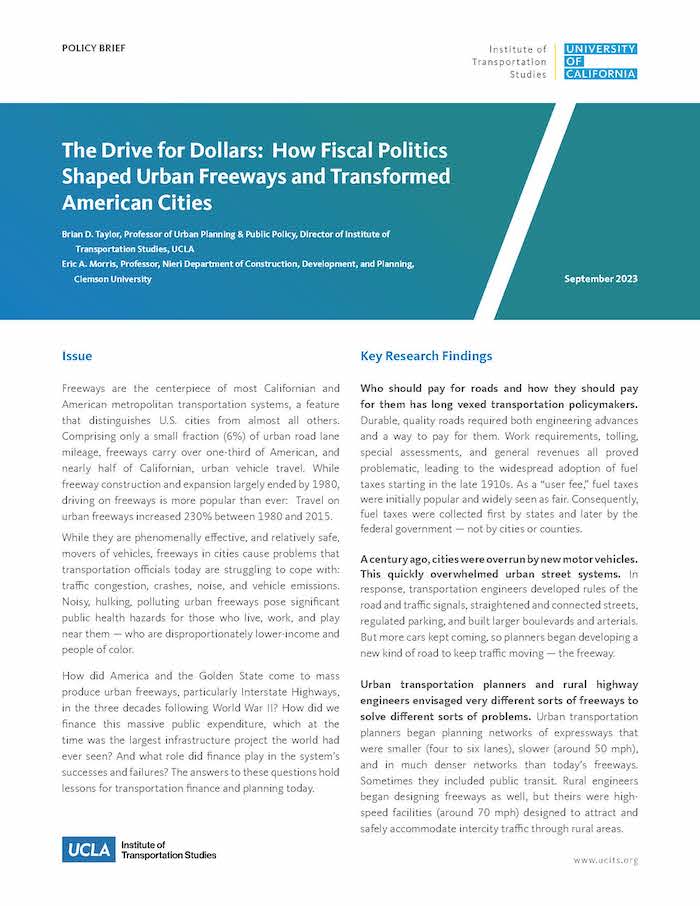Date: September 14, 2023
Author(s): Brian D. Taylor, Eric Morris
Abstract
Freeways are the centerpiece of most Californian and American metropolitan transportation systems, a feature that distinguishes U.S. cities from almost all others. Comprising only a small fraction (6%) of urban road lane mileage, freeways carry over one-third of American, and nearly half of Californian, urban vehicle travel. How did America and the Golden State come to mass produce urban freeways, particularly Interstate Highways, in the three decades following World War II? How did we finance this massive public expenditure, which at the time was the largest infrastructure project the world had ever seen? And what role did finance play in the system’s successes and failures? The answers to these questions hold lessons for transportation finance and planning today.


